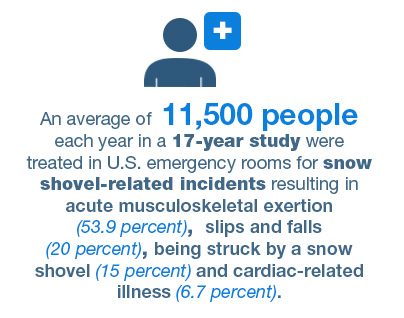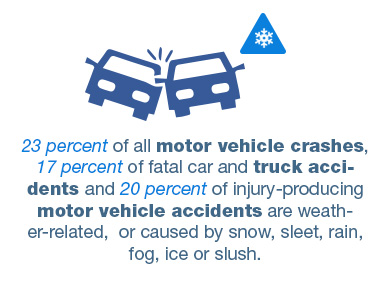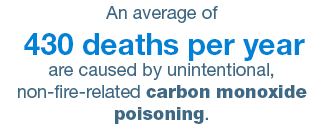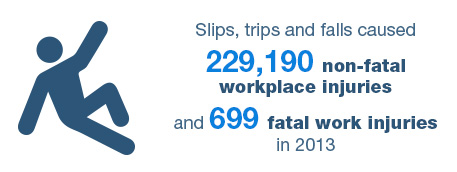Avoiding potential injury on a New York construction site in the winter means more than adding an extra layer of warm clothing. Construction workers and others who work outdoors over the winter months face specific weather-related hazards that can lead to construction accidents.
Here are the top five hazards to consider:
- 1. Cold Stress
Cold Fact

(Centers for Disease Control and Prevention).
Temperatures near or below freezing and strong winds can cause one’s skin and internal body temperatures to fall. Wetness or dampness from body sweat contributes to heat loss. When the body can’t warm itself, serious illness and injury may result, leading to permanent tissue damage or death.
Types of cold stress that construction workers should be aware of include:
- Trench foot – This is caused by prolonged exposure to wetness and cold temperatures. It occurs when the body constricts the blood vessels to prevent heat loss. This shuts down circulation in the feet. Skin tissue begins to die because of a lack of oxygen and nutrients and a buildup of toxic products. Redness, swelling, numbness and blisters are signs. Workers with signs of trench foot should remove their boots and wet socks, dry their feet, avoid walking, keep their feet elevated and seek medical help.
- Frostbite – This is the freezing of skin and underlying tissue. It can cause permanent injury. In severe cases, it leads to amputation. Workers with frostbite may experience reddened skin that develops into gray or white patches in the fingers, toes, nose or ear lobes. Other signs are: Skin that becomes firm; tingling, aching or loss of feeling; and blisters. A worker with frostbite should be warmed immediately and get medical attention.
- Hypothermia – This occurs when the normal body temperature (98.6°F) drops to less than 95°F. It can lead to unconsciousness and death. Uncontrollable shivering is an early sign of hypothermia. Additional signs include loss of coordination, confusion, slurred speech and slowed heart rate / breathing. A worker showing signs of hypothermia should be warmed by removing wet clothing and wrapping the worker entirely in layers of blankets and a vapor barrier (tarp or garbage bag). Emergency medical help should be sought. If medical help is more than 30 minutes away, place hot water bottles or hot packs in the armpits and sides of the chest and groin and feed the worker warm liquids.
Cold stress injuries at construction sites can be prevented by:
- Encouraging workers to dress warmly
- Providing the opportunity to consume enough warm drinks to stay hydrated
- Shielding work areas from drafts or wind to reduce wind chill
- Using radiant heaters to warm workers during breaks
- Training workers to recognize cold stress signs and symptoms
- Assigning workers to tasks in pairs so they monitor each other’s condition.
See the Occupational Safety and Health Administration (OHSA) Cold Stress Guide for more information.
- 2. Falls on Icy Surfaces
Cold Fact
Falls are among the most common construction site accidents. If you add snow and ice into the mix, the hazard increases significantly. Falls can cause fractures, head injuries, traumatic brain injury (TBI), back and spinal cord injuries and more.
Employers should see to it that walking surfaces are cleared of snow and ice, and that de-icer is spread as quickly as possible after a winter storm.
Fall injuries can be prevented by:
- Encouraging workers to wear insulated and water-resistant boots with good rubber treads
- Using safety lines for any work at a height above the ground
- Training workers to take short steps and walk at a slower pace on icy or snow-covered surfaces so they can react quickly to a change in traction.
- 3. Snow Removal
Cold Fact

( American Journal of Emergency Medicine).
Workers tasked with removing snow and ice from rooftops and other building structures such as decks or scaffolding are exposed to many serious hazards. Using ladders, aerial lifts, snow blowers and other equipment increases the risk.
In addition to losing their footing and falling, a worker may be hurt if a ladder they are on skids and falls. A roof or other surface under construction could collapse under the weight of snow, ice, workers and equipment.
There is also a danger of shock or electrocution from contact with power lines or damaged extension cords as well as the danger of musculoskeletal injuries from overexertion while attempting to move heavy snow.
Snow removal-related injuries can be prevented by:
- Using snow removal methods that do not involve workers going on roofs or upper floors (if possible) such as using long-handled snow rakes
- Checking records of the maximum load limits of the roof, deck or floor and considering load limits along with estimated weight from snow and ice, workers, equipment, etc., before sending workers to clear an elevated surface
- Ensuring that workers use ladders and/or aerial lifts safely and requiring that they use fall protection equipment.
See this OSHA hazard alert on snow removal for more information.
- 4. Winter Driving Accidents
Cold Fact

(Federal Highway Administration).
On a large construction site off a public street, it can be easy to forget safety rules for winter driving. But ice and snow make muddy roads under construction even more hazardous, and car and truck accidents can readily occur.
Prevent winter driving accidents at construction sites by:
- Ensuring workers assigned to vehicles and transport duties receive additional training about winter weather driving hazards
- Properly maintaining and inspecting vehicles before use
- Making sure roadway construction work zones have traffic controls clearly identified by signs, cones, barrels and barriers, which are erected to guide drivers and protect workers.
- 5. Carbon Monoxide Poisoning
Cold Fact

(Centers for Disease Control and Prevention).
Carbon monoxide (CO) is a potentially deadly gas that is produced by the combustion of any carbon-based product. Its buildup in the blood of those who inhale it displaces oxygen. This can lead to illness, neurological damage, coma and death.
Small gasoline-powered engines and tools such as heaters, generators, pressure washers and snow blowers produce high concentrations of carbon monoxide. Open fires in enclosed areas and motor vehicle exhaust in a closed garage can also cause carbon monoxide poisoning.
CO is odorless and colorless. Workers can be quickly overcome before they recognize a problem.
Symptoms of CO exposure include headaches, tightness across the chest, dizziness and drowsiness which is followed by nausea, vomiting and loss of consciousness.

Anyone who recognizes early signs of CO exposure should immediately turn off equipment, go outdoors or to a place with uncontaminated air and seek medical care.
Carbon monoxide injuries can be prevented by:
- Ensuring workers understand the dangers of operating gasoline-powered equipment in closed areas and recognize the signs of CO exposure
- Using gasoline-powered engines outdoors at a safe distance from air entering buildings
- Using electric or manual equipment where possible
- Issuing personal CO monitors to workers who must perform tasks where potential sources of CO exist.
 (
(